- Home
- Agatha Christie
Appointment With Death Page 21
Appointment With Death Read online
Page 21
The New York Times: ‘Here is the grand-manner detective story in all its glory.’
The Bookman: ‘Superlative Christie…extremely ingenious.’
Saturday Review: ‘A sure-fire attention-gripper—naturally.’
35. Third Girl (1966)
Hercule Poirot is interrupted at breakfast by a young woman who wishes to consult with the great detective about a murder she ‘might have’ committed—but upon being introduced to Poirot, the girl flees. And disappears. She has shared a flat with two seemingly ordinary young women. As Hercule Poirot—with the aid of the crime novelist Mrs Ariadne Oliver—learns more about this mysterious ‘third girl,’ he hears rumours of revolvers, flick-knives, and blood-stains. Even if a murder might not have been committed, something is seriously wrong, and it will take all of Poirot’s wits and tenacity to establish whether the ‘third girl’ is guilty, innocent, or insane.
Sunday Telegraph: ‘First-class Christie.’
Financial Times: ‘Mesmerising ingenuity.’
36. Hallowe’en Party (1969)
Mystery writer Ariadne Oliver has been invited to a Hallowe’en party at Woodleigh Common. One of the other guests is an adolescent girl known for telling tall tales of murder and intrigue—and for being generally unpleasant. But when the girl, Joyce, is found drowned in an apple-bob-bing tub, Mrs Oliver wonders after the fictional nature of the girl’s claim that she had once witnessed a murder. Which of the party guests wanted to keep her quiet is a question for Ariadne’s friend Hercule Poirot. But unmasking a killer this Hallowe’en is not going to be easy—for there isn’t a soul in Woodleigh who believes the late little storyteller was actually murdered.
Daily Mirror: ‘A thundering success…a triumph for Hercule Poirot.’
37. Elephants Can Remember (1972)
‘The Ravenscrofts didn’t seem that kind of person. They seemed well balanced and placid.’
And yet, twelve years earlier, the husband had shot the wife, and then himself—or perhaps it was the other way around, since sets of both of their fingerprints were on the gun, and the gun had fallen between them. The case haunts Ariadne Oliver, who had been a friend of the couple. The famous mystery novelist desires this real-life mystery solved, and calls upon Hercule Poirot to help her do so. Old sins have long shadows, the proverb goes. Poirot is now a very old man, but his mind is as nimble and as sharp as ever and can still penetrate deep into the shadows. But as Poirot and Mrs Oliver and Superintendent Spence reopen the long-closed case, a startling discovery awaits them. And if memory serves Poirot (and it does!), crime—like history—has a tendency to repeat itself.
The Times: ‘Splendid.’
38. Poirot’s Early Cases (1974)
With his career still in its formative years, we learn many things about how Poirot came to exercise those famous ‘grey cells’ so well. Fourteen of the eighteen stories collected herein are narrated by Captain Arthur Hastings—including what would appear to be the earliest Poirot short story, ‘The Affair at the Victory Ball,’ which follows soon on the events of The Mysterious Affair at Styles. Two of the stories are narrated by Poirot himself, to Hastings. One, ‘The Chocolate Box,’ concerns Poirot’s early days on the Belgian police force, and the case that was his greatest failure: ‘My grey cells, they functioned not at all,’ Poirot admits. But otherwise, in this most fascinating collection, they function brilliantly, Poirot’s grey cells, challenging the reader to keep pace at every twist and turn.
Collected within: ‘The Affair at the Victory Ball’; ‘The Adventure of the Clapham Cook’; ‘The Cornish Mystery’; ‘The Adventure of Johnnie Waverly’; ‘The Double Clue’; ‘The King of Clubs’; ‘The Lemesurier Inheritance’; ‘The Lost Mine’; ‘The Plymouth Express’; ‘The Chocolate Box’; ‘The Submarine Plans’; ‘The Third-Floor Flat’; ‘Double Sin’; ‘The Market Basing Mystery’; ‘Wasps’ Nest’; ‘The Veiled Lady’; ‘Problem at Sea’; ‘How Does Your Garden Grow?’
Sunday Express: ‘Superb, vintage Christie.’
39. Curtain: Poirot’s Last Case (1975)
Captain Arthur Hastings narrates. Poirot investigates. ‘This, Hastings, will be my last case,’ declares the detective who had entered the scene as a retiree in The Mysterious Affair at Styles, the captain’s, and our, first encounter with the now-legendary Belgian detective. Poirot promises that, ‘It will be, too, my most interesting case—and my most interesting criminal. For in X we have a technique superb, magnificent…X has operated with so much ability that he has defeated me, Hercule Poirot!’ The setting is, appropriately, Styles Court, which has since been converted into a private hotel. And under this same roof is X, a murderer five-times over; a murderer by no means finished murdering. In Curtain, Poirot will, at last, retire—death comes as the end. And he will bequeath to his dear friend Hastings an astounding revelation. ‘The ending of Curtain is one of the most surprising that Agatha Christie ever devised,’ writes her biographer, Charles Osborne.
Of note: On 6 August 1975, upon the publication of Curtain, The New York Times ran a front-page obituary of Hercule Poirot, complete with photograph. The passing of no other fictional character had been so acknowledged in America’s ‘paper of record.’ Agatha Christie had always intended Curtain to be ‘Poirot’s Last Case’: Having written the novel during the Blitz, she stored it (heavily insured) in a bank vault till the time that she, herself, would retire. Agatha Christie died on 12 January 1976.
Time: ‘First-rate Christie: fast, complicated, wryly funny.’
Charles Osborne on
Appointment with Death
POIROT (1938)
The Mallowans spent what was to be their final pre-war season in the Middle East in 1938, when they moved from Tell Brak ‘because of the blackmailing pressure of the Sheikhs of the Shammar tribe who were obviously bent on inducing our workmen to strike’,44 and set up camp more than a hundred miles to the west, in the Balikh Valley, remote marsh-like country but a paradise for the archaeologist. There they spent a profitable and enjoyable few months, until at the beginning of December it was time to pack up and return to England.
In Come, Tell Me How You Live, Agatha Christie described her mood of nostalgic regret as she and Max Mallowan left Beirut by ship. She stood looking over the rail at the lovely coastline ‘with the mountains of the Lebanon standing up dim and blue against the sky’, breathing in the romance of the scene. Then, suddenly, a cargo vessel crossed her line of vision, its crane accidentally dropped a load into the water, and a crate burst open. The surface of the sea before her was now dotted with lavatory seats. ‘Max comes up and asks what the row is about. I point, and explain that my mood of romantic farewell to Syria is now quite shattered!’
Two crime novels were published in 1938: Appointment with Death and Hercule Poirot’s Christmas.
The setting of Appointment with Death, a novel which begins in Jerusalem and moves to Petra, the ‘rose red city, half as old as time’, is one of Agatha Christie’s most exotic, and the 160 characters, the majority of whom are one large family of Americans touring the Holy Land, are among her most colourful. The Boynton family consists of old Mrs Boynton, fat, grotesque and a mental sadist, her four offspring, and the wife of one of them. The party of tourists who make the excursion to Petra also includes a French psychiatrist, a young English woman who is a medical student, and Lady Westholme, a formidable British Member of Parliament described as ‘a big, masterful woman with a rocking-horse face’. It also includes M. Hercule Poirot. Poirot is travelling for pleasure, like the others, but he also has an introduction from his old friend Colonel Race to Colonel Carbury, who is with the British Army in Transjordania. When Mrs Boynton is murdered at Petra, Poirot is asked to help with the investigation.
It was in 1938, the year in which Appointment with Death was published, that Agatha Christie said of Hercule Poirot in an interview she gave to the London Daily Mail,
There are moments when I have felt: ‘Why—why—why did I ever invent this detestabl
e, bombastic, tiresome little creature?…eternally straightening things, eternally boasting, eternally twirling his moustache and tilting his egg-shaped head….’ Anyway, what is an egg-shaped head….? I am beholden to him financially…On the other hand, he owes his very existence to me. In moments of irritation, I point out that by a few strokes of the pen…I could destroy him utterly. He replies, grandiloquently: ‘Impossible to get rid of Poirot like that! He is much too clever.’45
Clearly, the author still had a very soft spot for her famous detective, however much she may have become exasperated with him, and her affection for the childishly arrogant but nonetheless endearing Poirot is evident throughout Appointment with Death. This is an especially well-plotted novel, and the atmosphere of the various places described, the Dome of the Rock in Jerusalem, the Judean desert, the Dead Sea, the brooding, timeless beauty of Petra, is conveyed with an easy economy.
It was not often that Agatha Christie modeled a character 161 on a recognizable person in real life. However, you are tempted to identify Lady Westholme, the overbearing Member of Parliament in Appointment with Death who is ‘much respected and almost universally disliked’, with Lady Astor. Like Lady Astor, Lady Westholme is an American who married into the English aristocracy and successfully stood for election to Parliament. The French psychiatrist’s comment on Lady Westholme (‘that woman should be poisoned…It is incredible to me that she has had a husband for many years and that he has not already done so’) puts one in mind of the often-quoted exchange between Lady Astor and Winston Churchill:
If you were my husband, sir, I would poison your coffee.
If you were my wife, madam, I would swallow it.
Seven years after publication as a novel, Agatha Christie turned Appointment with Death into a play. In doing so, she made a number of significant changes. Chief among these is the deletion of Poirot from the cast of characters. (She had done this once before, in her dramatization of Death on the Nile.) The investigation of Mrs Boynton’s death is now undertaken alone by Colonel Carbery (formerly ‘Carbury’, but then Agatha Christie was often careless about spelling), but it is one of the suspects, and not Carbery, who discovers what really happened. Also, the ending of the play is different from that of the novel. The character who, in the novel, turned out to be the murderer, is, in the play, perfectly innocent. More than this it would not be proper to reveal, though it is probably safe to add that the play has a new character: not a substitute for Poirot, but a comical local politician called Alderman Higgs (or, as he pronounces it, ‘Halderman ’Iggs’). ‘Ah coom from Lancashire—same as you do’, he says with a chuckle to Lady Westholme. He is, of course, of a different political colour from the Conservative Lady Westholme, and intends to oppose her as an Independent candidate at the next by-elections. The role of the Arab guide or Dragoman has also been built up to provide the conventional comic relief which used to be thought necessary in plays of this kind.
After a short, pre-London tour which opened in Glasgow, 162 Appointment with Death came to the Piccadilly Theatre, London, on 31 March 1945. Mary Clare was greatly liked as the evil Mrs Boynton, and other leading roles were played by Ian Lubbock (Lennox Boynton), Beryl Machin (Nadine), John Wynn (Raymond), Carla Lehmann (Sarah King), Owen Reynolds (Colonel Carbery), Janet Burnell (Lady Westholme) and Percy Walsh (Alderman Higgs). The play was directed by Terence de Marney.
In 1988 a feature film version of the story was released by the Cannon Group, starring Peter Ustinov as Poirot for the third time. Adapted by Anthony Shaffer and directed by Michael Winner, the film was shot in Israel with a big-name cast including Lauren Bacall, Carrie Fisher, Hayley Mills, Michael Sarrazin and Sir John Gielgud.
About Charles Osborne
This essay was adapted from Charles Osborne’s The Life and Crimes of Agatha Christie: A Biographical Companion to the Works of Agatha Christie (1982, rev. 1999). Mr. Osborne was born in Brisbane in 1927. He is known internationally as an authority on opera, and has written a number of books on musical and literary subjects, among them The Complete Operas of Verdi (1969); Wagner and His World (1977); and W.H. Auden: The Life of a Poet (1980). An addict of crime fiction and the world’s leading authority on Agatha Christie, Charles Osborne adapted the Christie plays Black Coffee (Poirot); Spider’s Web; and The Unexpected Guest into novels. He lives in London.
44 Max Mallowan: op. cit.
45 Quoted in Earl F. Bargainnier: The Gentle Art of Murder (1980).
About Agatha Christie
Agatha Christie is known throughout the world as the Queen of Crime. Her books have sold over a billion copies in English and another billion in 100 foreign languages. She is the most widely published author of all time and in any language, outsold only by the Bible and Shakespeare. Mrs Christie is the author of eighty crime novels and short story collections, nineteen plays, and six novels written under the name of Mary Westmacott.
Agatha Christie’s first novel, The Mysterious Affair at Styles, was written towards the end of World War I (during which she served in the Voluntary Aid Detachments). In it she created Hercule Poirot, the little Belgian investigator who was destined to become the most popular detective in crime fiction since Sherlock Holmes. After having been rejected by a number of houses, The Mysterious Affair at Styles was eventually published by The Bodley Head in 1920.
In 1926, now averaging a book a year, Agatha Christie wrote her masterpiece. The Murder of Roger Ackroyd was the first of her books to be published by William Collins and marked the beginning of an author-publisher relationship that lasted for fifty years and produced over seventy books. The Murder of Roger Ackroyd was also the first of Agatha Christie’s works to be dramatized—as Alibi—and to have a successful run in London’s West End. The Mousetrap, her most famous play, opened in 1952 and runs to this day at St Martin’s Theatre in the West End; it is the longest-running play in history.
Agatha Christie was made a Dame in 1971. She died in 1976, since when a number of her books have been published: the bestselling novel Sleeping Murder appeared in 1976, followed by An Autobiography and the short story collections Miss Marple’s Final Cases; Problem at Pollensa Bay; and While the Light Lasts. In 1998, Black Coffee was the first of her plays to be novelized by Charles Osborne, Mrs Christie’s biographer.
www.agathachristie.com
For more information about Agatha Christie, please visit the official website.
Visit www.AuthorTracker.com for exclusive information on your favorite HarperCollins author.
The Agatha Christie Collection
Christie Crime Classics
The Man in the Brown Suit
The Secret of Chimneys
The Seven Dials Mystery
The Mysterious Mr Quin
The Sittaford Mystery
The Hound of Death
The Listerdale Mystery
Why Didn’t They Ask Evans?
Parker Pyne Investigates
Murder Is Easy
And Then There Were None
Towards Zero
Death Comes as the End
Sparkling Cyanide
Crooked House
They Came to Baghdad
Destination Unknown
Spider’s Web *
The Unexpected Guest *
Ordeal by Innocence
The Pale Horse
Endless Night
Passenger To Frankfurt
Problem at Pollensa Bay
While the Light Lasts
Hercule Poirot Investigates
The Mysterious Affair at Styles
The Murder on the Links
Poirot Investigates
The Murder of Roger Ackroyd
The Big Four
The Mystery of the Blue Train
Black Coffee *
Peril at End House
Lord Edgware Dies
Murder on the Orient Express
Three-Act Tragedy
Death in the Clouds
The ABC Murders
M
urder in Mesopotamia
Cards on the Table
Murder in the Mews
Dumb Witness
Death on the Nile
Appointment with Death
Hercule Poirot’s Christmas
Sad Cypress
One, Two, Buckle My Shoe
Evil Under the Sun
Five Little Pigs
The Hollow
The Labours of Hercules
Taken at the Flood
Mrs McGinty’s Dead
After the Funeral
Hickory Dickory Dock
Dead Man’s Folly
Cat Among the Pigeons
The Adventure of the Christmas Pudding
The Clocks
Third Girl
Hallowe’en Party
Elephants Can Remember
Poirot’s Early Cases
Curtain: Poirot’s Last Case
Miss Marple Mysteries
The Murder at the Vicarage
The Thirteen Problems
The Body in the Library
The Moving Finger
A Murder Is Announced
They Do It with Mirrors
A Pocket Full of Rye
4.50 from Paddington
The Mirror Crack’d from Side to Side
A Caribbean Mystery
At Bertram’s Hotel
Nemesis
Sleeping Murder
Miss Marple’s Final Cases
Tommy & Tuppence
The Secret Adversary
Partners in Crime
N or M?
By the Pricking of My Thumbs
Postern of Fate

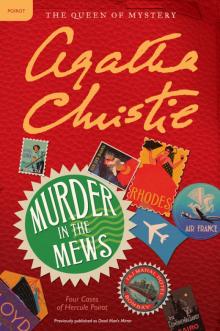 Murder in the Mews
Murder in the Mews Postern of Fate
Postern of Fate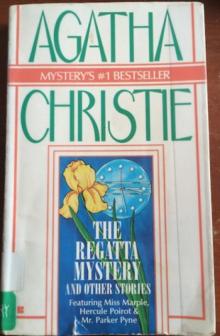 The Regatta Mystery and Other Stories
The Regatta Mystery and Other Stories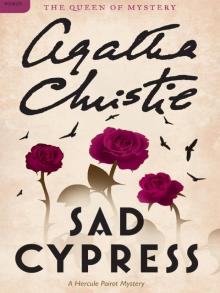 Sad Cypress
Sad Cypress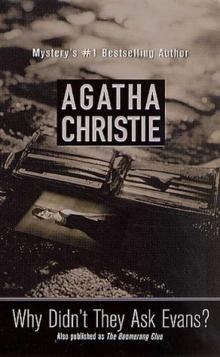 Why Didn't They Ask Evans?
Why Didn't They Ask Evans? After the Funeral
After the Funeral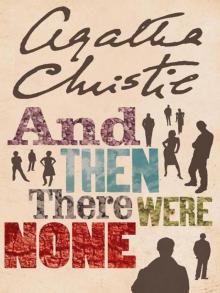 And Then There Were None
And Then There Were None The Witness for the Prosecution
The Witness for the Prosecution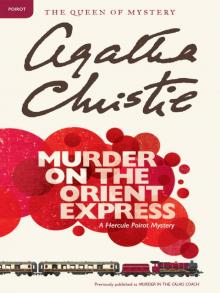 Murder on the Orient Express
Murder on the Orient Express The Seven Dials Mystery
The Seven Dials Mystery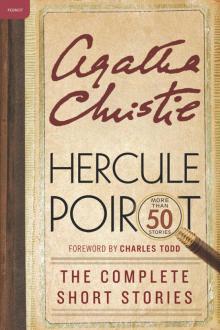 Hercule Poirot: The Complete Short Stories
Hercule Poirot: The Complete Short Stories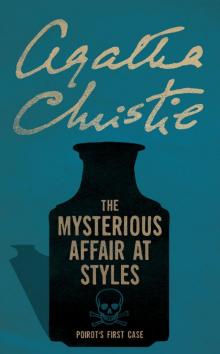 The Mysterious Affair at Styles
The Mysterious Affair at Styles Sleeping Murder
Sleeping Murder Hickory Dickory Dock
Hickory Dickory Dock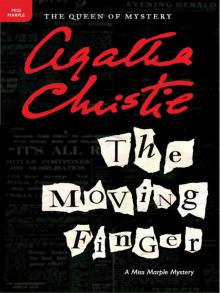 The Moving Finger
The Moving Finger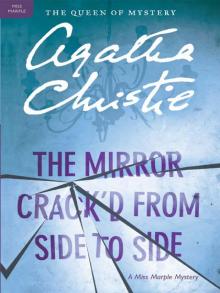 The Mirror Crack'd From Side to Side
The Mirror Crack'd From Side to Side Ordeal by Innocence
Ordeal by Innocence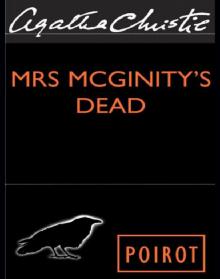 Mrs. McGinty's Dead
Mrs. McGinty's Dead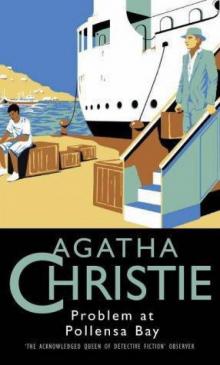 Problem at Pollensa Bay and Other Stories
Problem at Pollensa Bay and Other Stories Death Comes as the End
Death Comes as the End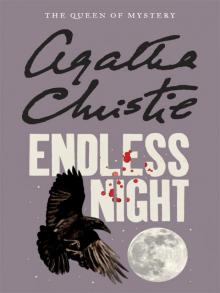 Endless Night
Endless Night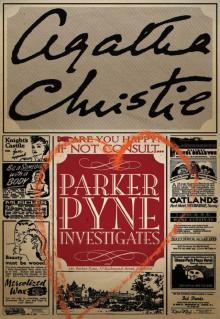 Parker Pyne Investigates
Parker Pyne Investigates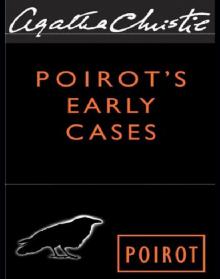 Poirot's Early Cases: 18 Hercule Poirot Mysteries
Poirot's Early Cases: 18 Hercule Poirot Mysteries Murder Is Easy
Murder Is Easy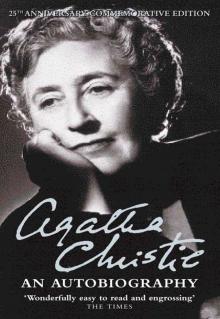 An Autobiography
An Autobiography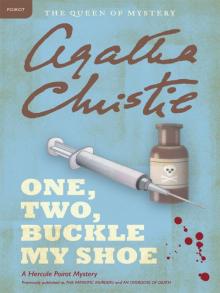 One, Two, Buckle My Shoe
One, Two, Buckle My Shoe A Pocket Full of Rye
A Pocket Full of Rye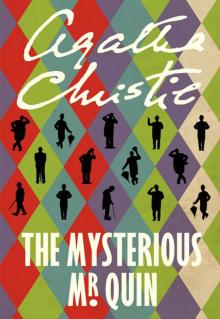 The Mysterious Mr. Quin
The Mysterious Mr. Quin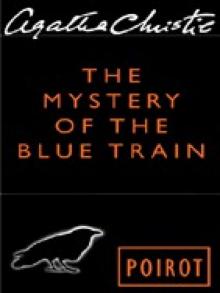 The Mystery of the Blue Train
The Mystery of the Blue Train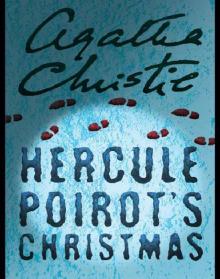 Hercule Poirot's Christmas: A Hercule Poirot Mystery
Hercule Poirot's Christmas: A Hercule Poirot Mystery Cards on the Table (SB)
Cards on the Table (SB) Three Act Tragedy
Three Act Tragedy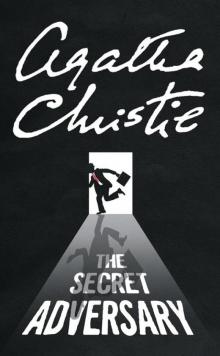 The Secret Adversary
The Secret Adversary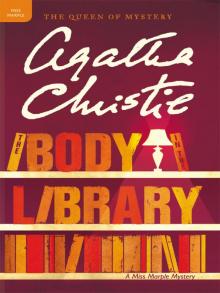 The Body in the Library
The Body in the Library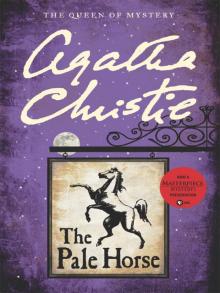 The Pale Horse
The Pale Horse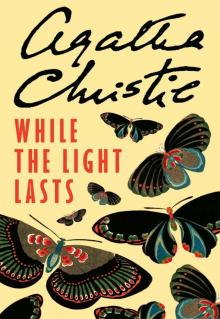 While the Light Lasts
While the Light Lasts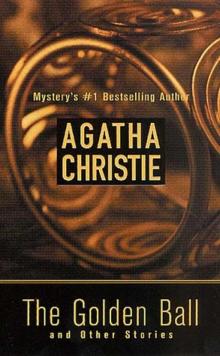 The Golden Ball and Other Stories
The Golden Ball and Other Stories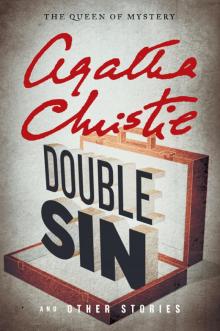 Double Sin and Other Stories
Double Sin and Other Stories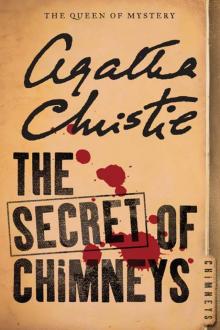 The Secret of Chimneys
The Secret of Chimneys Five Little Pigs
Five Little Pigs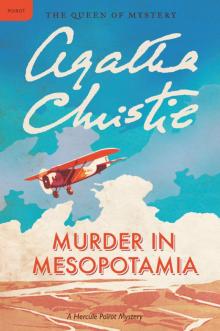 Murder in Mesopotamia: A Hercule Poirot Mystery
Murder in Mesopotamia: A Hercule Poirot Mystery The Mousetrap and Other Plays
The Mousetrap and Other Plays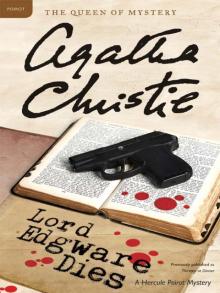 Lord Edgware Dies
Lord Edgware Dies The Hound of Death
The Hound of Death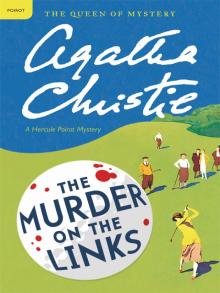 The Murder on the Links
The Murder on the Links A Caribbean Mystery
A Caribbean Mystery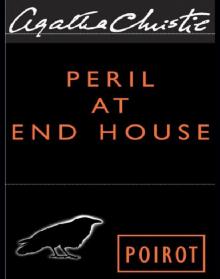 Peril at End House: A Hercule Poirot Mystery
Peril at End House: A Hercule Poirot Mystery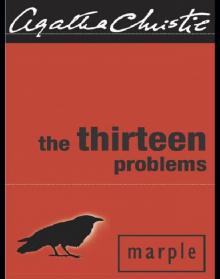 The Thirteen Problems
The Thirteen Problems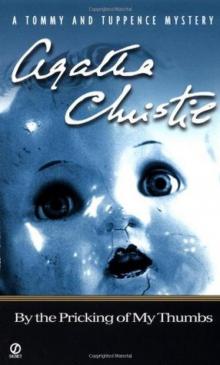 By the Pricking of My Thumbs
By the Pricking of My Thumbs Mrs McGinty's Dead / the Labours of Hercules (Agatha Christie Collected Works)
Mrs McGinty's Dead / the Labours of Hercules (Agatha Christie Collected Works)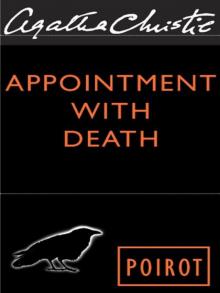 Appointment With Death
Appointment With Death Murder Is Announced
Murder Is Announced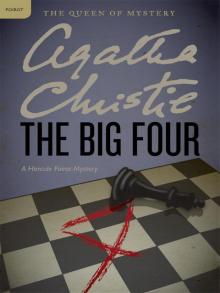 The Big Four
The Big Four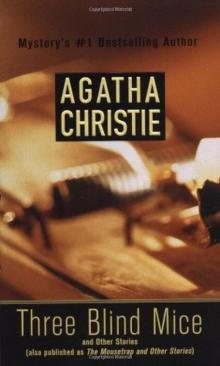 Three Blind Mice and Other Stories
Three Blind Mice and Other Stories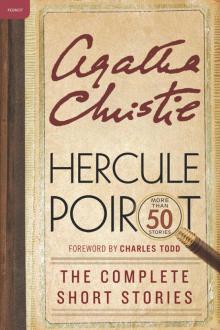 Hercule Poirot- the Complete Short Stories
Hercule Poirot- the Complete Short Stories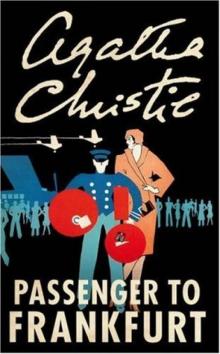 Passenger to Frankfurt
Passenger to Frankfurt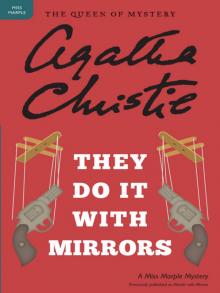 They Do It With Mirrors
They Do It With Mirrors Poirot Investigates
Poirot Investigates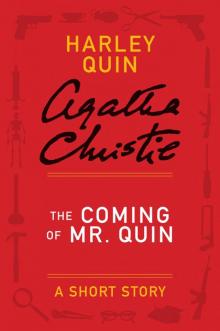 The Coming of Mr. Quin: A Short Story
The Coming of Mr. Quin: A Short Story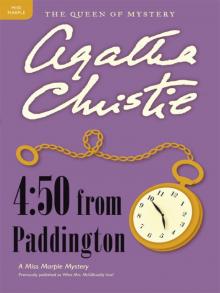 4:50 From Paddington
4:50 From Paddington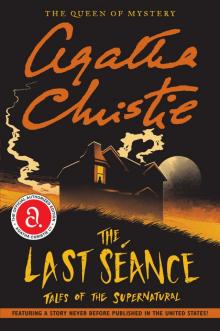 The Last Seance
The Last Seance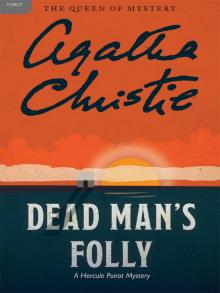 Dead Man's Folly
Dead Man's Folly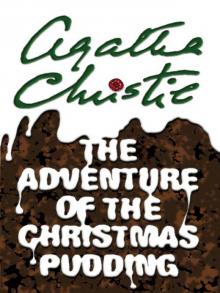 The Adventure of the Christmas Pudding
The Adventure of the Christmas Pudding The A.B.C. Murders
The A.B.C. Murders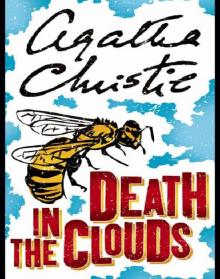 Death in the Clouds
Death in the Clouds Towards Zero
Towards Zero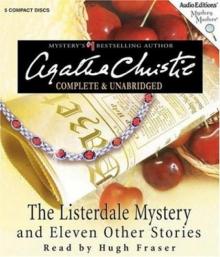 The Listerdale Mystery and Eleven Other Stories
The Listerdale Mystery and Eleven Other Stories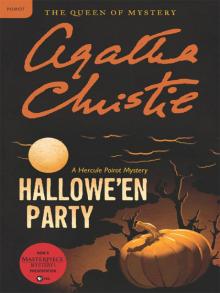 Hallowe'en Party
Hallowe'en Party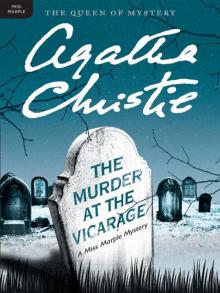 Murder at the Vicarage
Murder at the Vicarage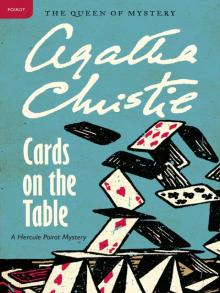 Cards on the Table
Cards on the Table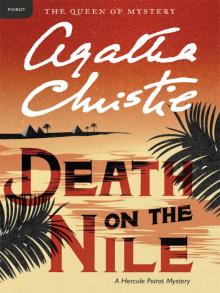 Death on the Nile
Death on the Nile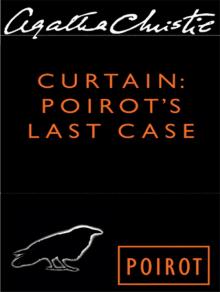 Curtain
Curtain Partners in Crime
Partners in Crime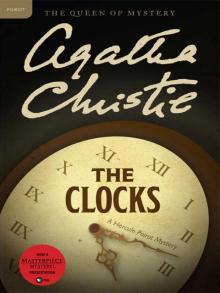 The Listerdale Mystery / the Clocks (Agatha Christie Collected Works)
The Listerdale Mystery / the Clocks (Agatha Christie Collected Works)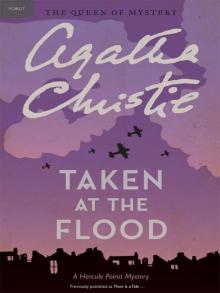 Taken at the Flood
Taken at the Flood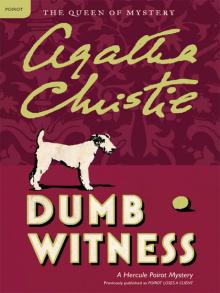 Dumb Witness
Dumb Witness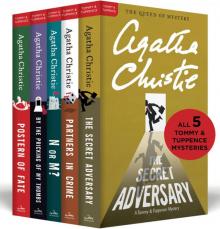 The Complete Tommy and Tuppence
The Complete Tommy and Tuppence Problem at Pollensa Bay
Problem at Pollensa Bay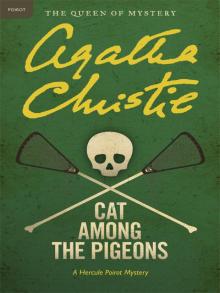 Cat Among the Pigeons
Cat Among the Pigeons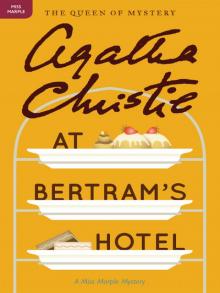 At Bertram's Hotel
At Bertram's Hotel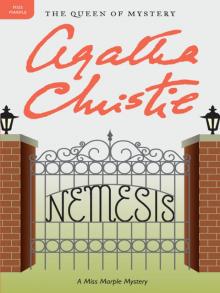 Nemesis
Nemesis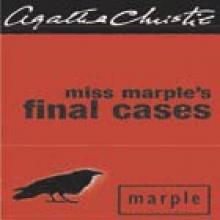 Miss Marple's Final Cases
Miss Marple's Final Cases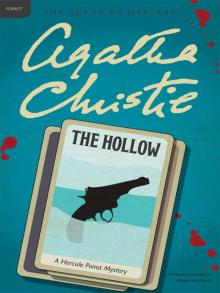 The Hollow
The Hollow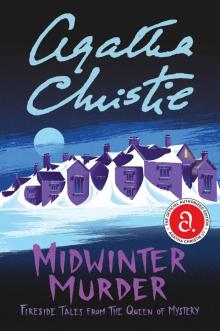 Midwinter Murder
Midwinter Murder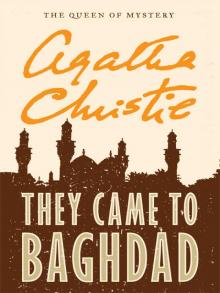 They Came to Baghdad
They Came to Baghdad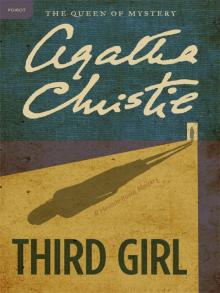 Third Girl
Third Girl Destination Unknown
Destination Unknown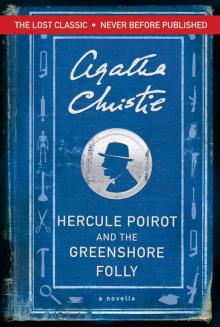 Hercule Poirot and the Greenshore Folly
Hercule Poirot and the Greenshore Folly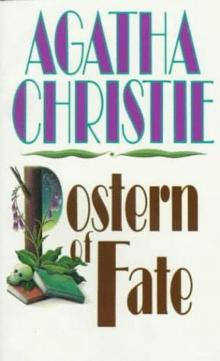 Postern of Fate tat-5
Postern of Fate tat-5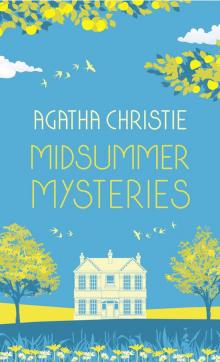 Midsummer Mysteries
Midsummer Mysteries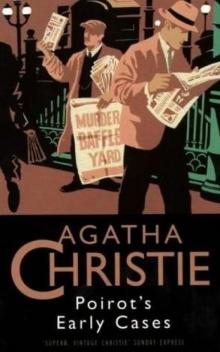 Poirot's Early Cases hp-38
Poirot's Early Cases hp-38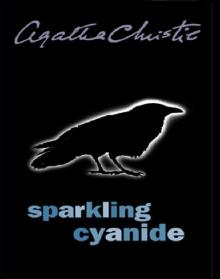 Sparkling Cyanide
Sparkling Cyanide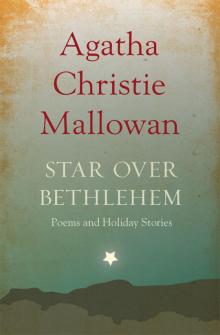 Star over Bethlehem
Star over Bethlehem Black Coffee hp-7
Black Coffee hp-7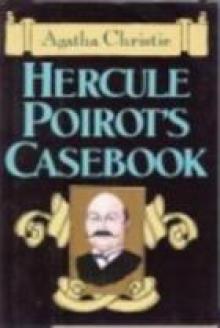 Hercule Poirot's Casebook (hercule poirot)
Hercule Poirot's Casebook (hercule poirot)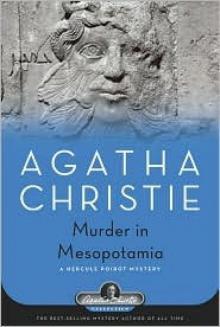 Murder in Mesopotamia hp-14
Murder in Mesopotamia hp-14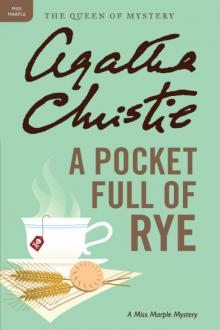 A Pocket Full of Rye: A Miss Marple Mystery (Miss Marple Mysteries)
A Pocket Full of Rye: A Miss Marple Mystery (Miss Marple Mysteries)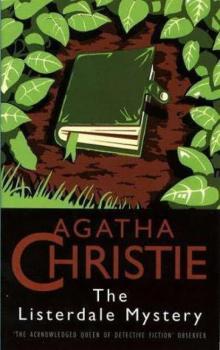 The Listerdale Mystery
The Listerdale Mystery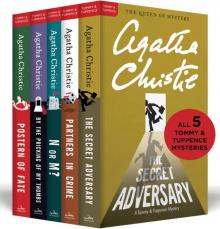 The Complete Tommy & Tuppence Collection
The Complete Tommy & Tuppence Collection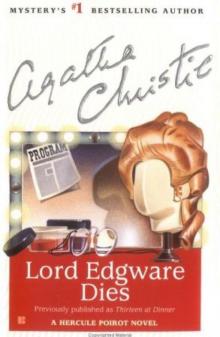 Lord Edgware Dies hp-8
Lord Edgware Dies hp-8 Death in the Clouds hp-12
Death in the Clouds hp-12 Short Stories
Short Stories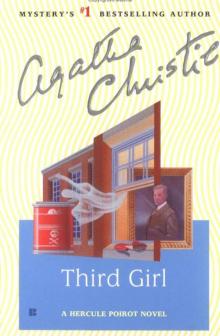 Third Girl hp-37
Third Girl hp-37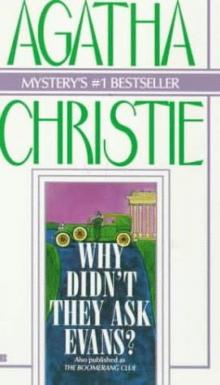 Why Didn't They Ask Evans
Why Didn't They Ask Evans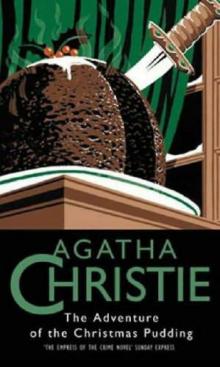 Adventure of the Christmas Pudding and other stories
Adventure of the Christmas Pudding and other stories Cards on the Table hp-15
Cards on the Table hp-15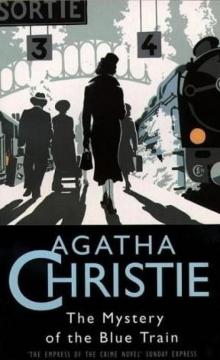 The Mystery of the Blue Train hp-6
The Mystery of the Blue Train hp-6 After the Funeral hp-29
After the Funeral hp-29 Poirot Investigates hp-3
Poirot Investigates hp-3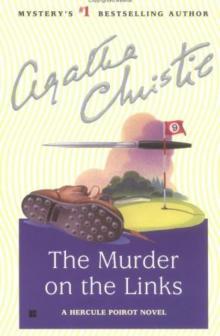 Murder on the Links hp-2
Murder on the Links hp-2 The Mysterious Mr Quin
The Mysterious Mr Quin Curtain hp-39
Curtain hp-39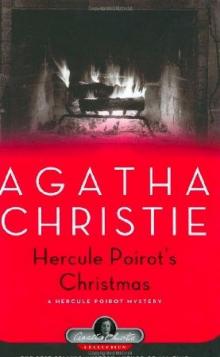 Hercule Poirot's Christmas hp-19
Hercule Poirot's Christmas hp-19 Partners in Crime tat-2
Partners in Crime tat-2 The Clocks hp-36
The Clocks hp-36 Murder, She Said
Murder, She Said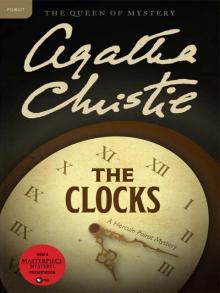 The Clocks
The Clocks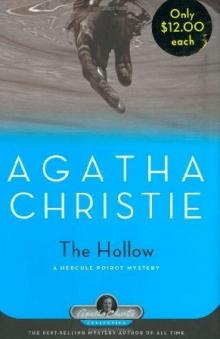 The Hollow hp-24
The Hollow hp-24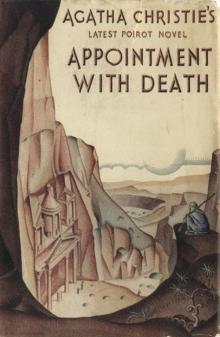 Appointment with Death hp-21
Appointment with Death hp-21 Murder in the mews hp-18
Murder in the mews hp-18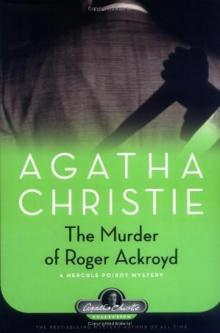 The Murder Of Roger Ackroyd hp-4
The Murder Of Roger Ackroyd hp-4 Dumb Witness hp-16
Dumb Witness hp-16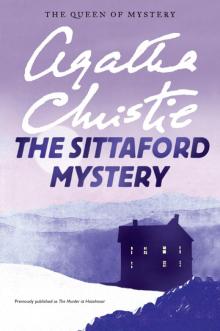 The Sittaford Mystery
The Sittaford Mystery Mrs McGinty's Dead
Mrs McGinty's Dead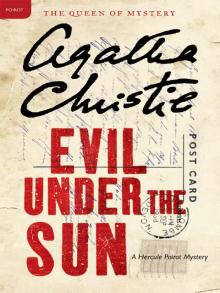 Evil Under the Sun
Evil Under the Sun The A.B.C. Murders hp-12
The A.B.C. Murders hp-12 The Murder at the Vicarage mm-1
The Murder at the Vicarage mm-1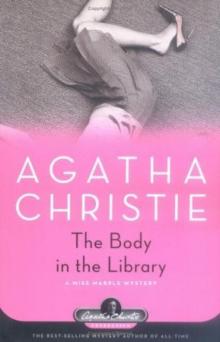 The Body in the Library mm-3
The Body in the Library mm-3 Miss Marple and Mystery
Miss Marple and Mystery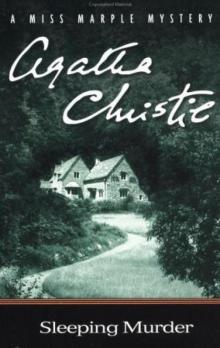 Sleeping Murder mm-14
Sleeping Murder mm-14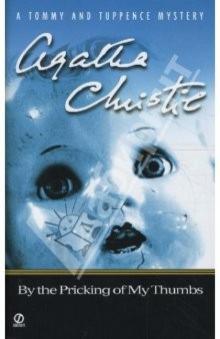 By the Pricking of My Thumbs tat-4
By the Pricking of My Thumbs tat-4 A Pocket Full of Rye mm-7
A Pocket Full of Rye mm-7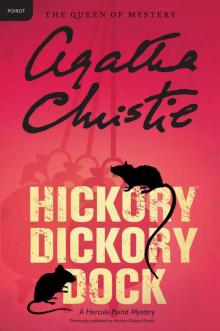 Hickory Dickory Dock: A Hercule Poirot Mystery
Hickory Dickory Dock: A Hercule Poirot Mystery The Big Four hp-5
The Big Four hp-5 The Labours of Hercules hp-26
The Labours of Hercules hp-26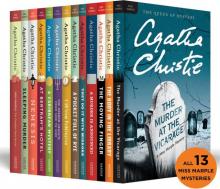 The Complete Miss Marple Collection
The Complete Miss Marple Collection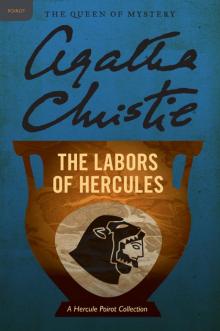 The Labours of Hercules
The Labours of Hercules 4.50 From Paddington
4.50 From Paddington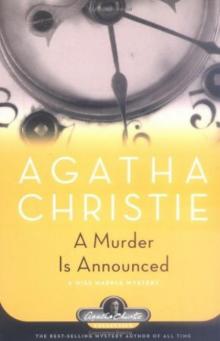 A Murder Is Announced mm-5
A Murder Is Announced mm-5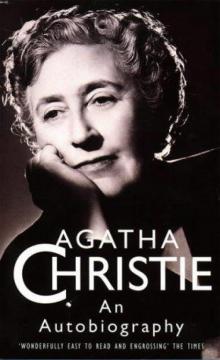 Agahta Christie: An autobiography
Agahta Christie: An autobiography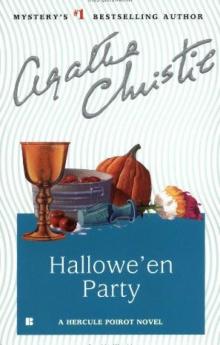 Hallowe'en Party hp-36
Hallowe'en Party hp-36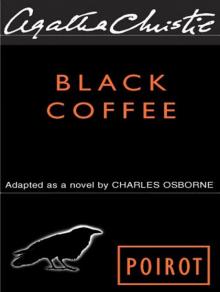 Black Coffee
Black Coffee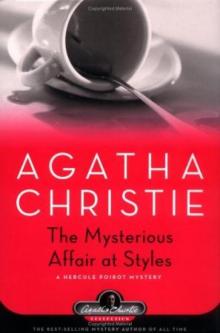 The Mysterious Affair at Styles hp-1
The Mysterious Affair at Styles hp-1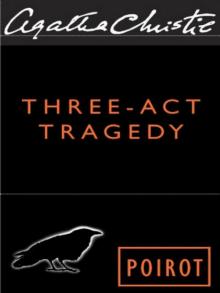 Three-Act Tragedy
Three-Act Tragedy Best detective short stories
Best detective short stories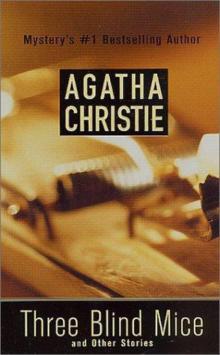 Three Blind Mice
Three Blind Mice Nemesis mm-11
Nemesis mm-11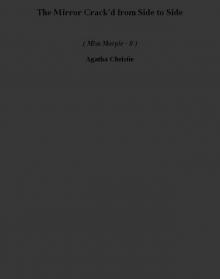 The Mirror Crack'd from Side to Side mm-8
The Mirror Crack'd from Side to Side mm-8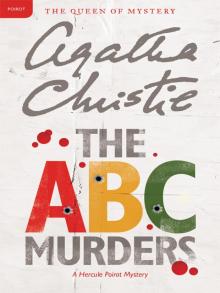 The ABC Murders
The ABC Murders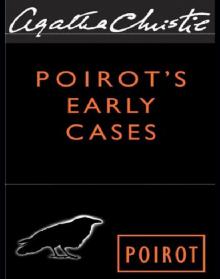 Poirot's Early Cases
Poirot's Early Cases The Unexpected Guest
The Unexpected Guest A Caribbean Mystery - Miss Marple 09
A Caribbean Mystery - Miss Marple 09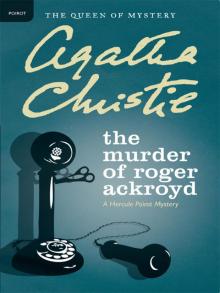 The Murder of Roger Ackroyd
The Murder of Roger Ackroyd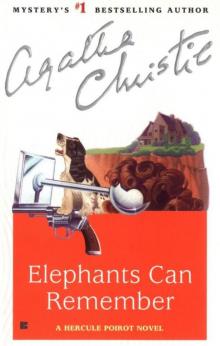 Elephants Can Remember hp-39
Elephants Can Remember hp-39 The Mirror Crack'd: from Side to Side
The Mirror Crack'd: from Side to Side Sad Cypress hp-21
Sad Cypress hp-21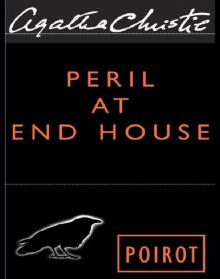 Peril at End House
Peril at End House Elephants Can Remember
Elephants Can Remember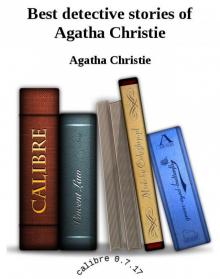 Best detective stories of Agatha Christie
Best detective stories of Agatha Christie Hercule Poirot's Christmas
Hercule Poirot's Christmas The Body In The Library - Miss Marple 02
The Body In The Library - Miss Marple 02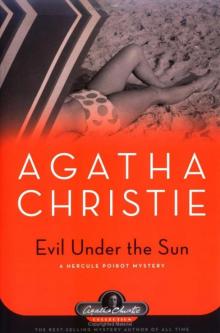 Evil Under the Sun hp-25
Evil Under the Sun hp-25 The Capture of Cerberus
The Capture of Cerberus The Hound of Death and Other Stories
The Hound of Death and Other Stories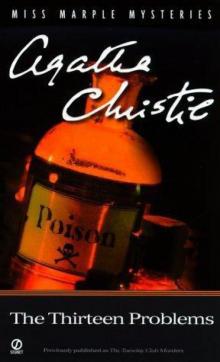 The Thirteen Problems (miss marple)
The Thirteen Problems (miss marple) The Thirteen Problems-The Tuesday Night Club
The Thirteen Problems-The Tuesday Night Club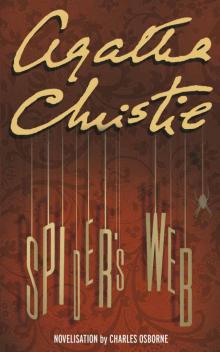 Spider's Web
Spider's Web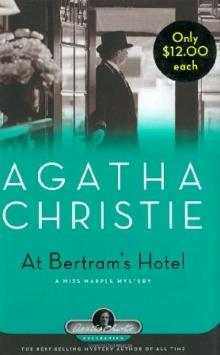 At Bertram's Hotel mm-12
At Bertram's Hotel mm-12 The Murder at the Vicarage (Agatha Christie Mysteries Collection)
The Murder at the Vicarage (Agatha Christie Mysteries Collection)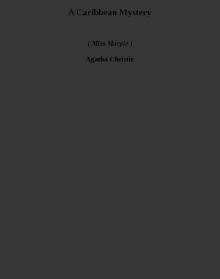 A Caribbean Mystery (miss marple)
A Caribbean Mystery (miss marple) A Murder Is Announced
A Murder Is Announced Clues to Christie
Clues to Christie The Moving Finger mm-3
The Moving Finger mm-3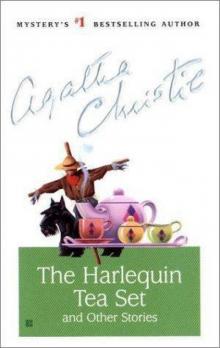 The Harlequin Tea Set and Other Stories
The Harlequin Tea Set and Other Stories Murder on the Links
Murder on the Links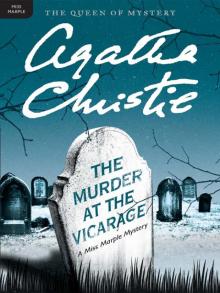 The Murder at the Vicarage
The Murder at the Vicarage N or M tat-3
N or M tat-3 The Secret Adversary tat-1
The Secret Adversary tat-1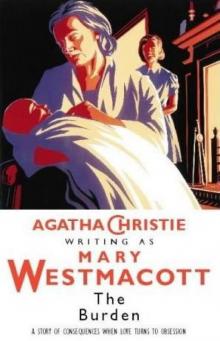 The Burden
The Burden Mrs McGinty's Dead hp-28
Mrs McGinty's Dead hp-28 Dead Man's Folly hp-31
Dead Man's Folly hp-31 Peril at End House hp-8
Peril at End House hp-8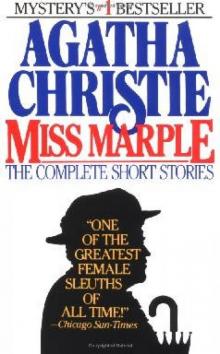 Complete Short Stories Of Miss Marple mm-16
Complete Short Stories Of Miss Marple mm-16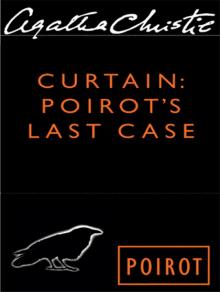 Curtain: Poirot's Last Case
Curtain: Poirot's Last Case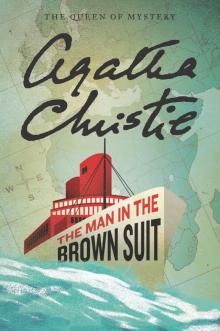 The Man in the Brown Suit
The Man in the Brown Suit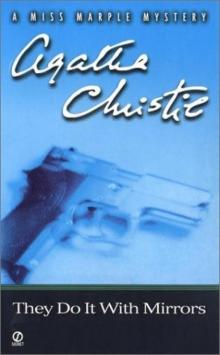 They Do It With Mirrors mm-6
They Do It With Mirrors mm-6